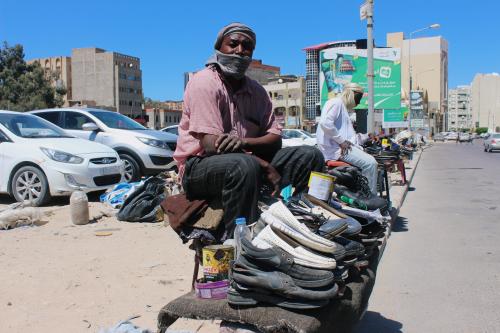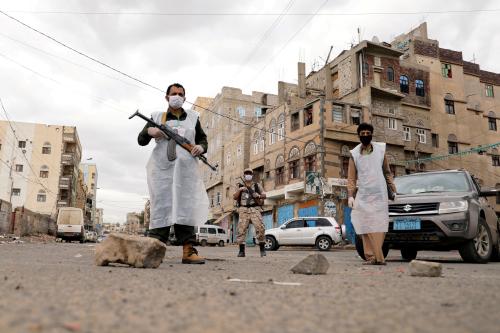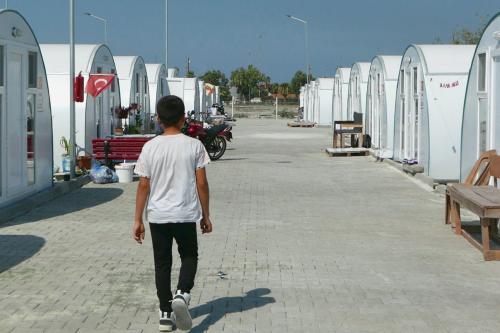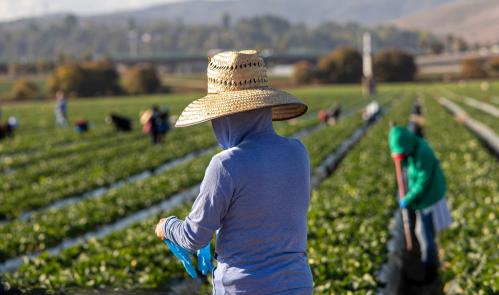The Global Network Against Food Crisis, an alliance of United Nations and partner agencies, cautioned this year that the COVID- 19 pandemic could lead to 265 million people suffering from “acute food insecurity, which requires urgent food, nutrition, and livelihoods assistance for survival,” that is, a food crisis. That figure is double 2019’s 135 million across 55 countries. Of the latter, 77 million were in conflict-afflicted countries. Climate change and economic shocks impacted another 34 million and 24 million people, respectively. Over half (73 million) lived in Africa, 43 million in the Middle East and Asia, and 18.5 million in Latin America and the Caribbean.
So far, the worst has been averted; global cereal stocks are twice as large as they were in the 2007-2008 food crisis, shipping is 20 times cheaper, and oil is below $40. Lessons have been learned from 2007-2008 when food export bans by 33 countries, panic buying, and the rise in energy prices led to sharp increases in grain prices. Some 75 million people were unable to acquire sufficient food and 100 million were pushed into poverty. This time, the G-20 and others made pledges and calls to refrain from such practices. And while 19 countries have curbed exports, those actions have impacted just 5 percent of the world’s traded calories, whereas the 2007-08 bans impacted 19 percent.
Nevertheless, the Middle East and North Africa (MENA) region remains one of the areas most vulnerable to a food crisis. MENA countries are among the world’s largest food importers: Most depend on imports for over half their needs. This is also the world’s most water-stressed region with massive subsidies for water and agriculture and a preponderant, if ultimately unsustainable, role for the state as many countries still pursue the chimera of cheap staple foods and self-sufficiency in cereal production rather than local and international market-driven solutions.
MENA also faces conflicts in Libya, Syria, and Yemen and sustained political protests in Algeria, Iraq, and Lebanon with periodic outbursts in Iran. According to the International Monetary Fund, regional growth will be negative 3 percent in 2020. The sharp drop in oil demand and prices has hit hard oil exporters and those dependent on their largesse. All countries will see a sharp drop in tourism and remittances. Unemployment and poverty numbers will increase. Large countries like Egypt and Iran are buying more wheat as a precaution against social unrest. Morocco will also import more as a drought—presaging more of the same due to climate change—decreases 2020 wheat production by over 50 percent.
The issue for the region is not food availability, whose numbers are sufficient and stable since 1999-2001. Access to food is the challenge. In 2019, the U.N. Food and Agriculture Organization noted that hunger had risen since 2011 due to conflict and protracted crisis. Some 52 million people in the region were chronically undernourished of which 34 million were in conflict-affected countries. The worst afflicted are Syria and Yemen, although Lebanon and Libya also face a crisis in food security.
In Yemen, 24 million people—80 percent of the population–require humanitarian assistance while 16 million are acutely food insecure, needing food aid. Famine looms when port operations are disrupted. With funds lacking, the U.N. has cut its rations to 8.5 million northerners by half. In Syria, 9.3 million people—over half the population—are now food insecure, needing food and livelihood assistance. The close links with Lebanon’s battered financial system, new U.S. sanctions, and the pandemic will increase these numbers.
The over 6 million Syrian refugees in Jordan, Lebanon, and Turkey who are dependent on informal employment, often for daily wages, are hard hit by closures and economic downturns. The region’s 11 million internally displaced people—many of whom are concentrated in Iraq, Libya, Syria and Yemen—are among the most vulnerable. In Iraq, the displacement caused by the Islamic State group (ISIS) and its aftermath persists, with food aid a critical need. For the most part, health systems are inadequate to confront the pandemic. Out of the 3 million Palestinians in the West Bank and the 2 million in Gaza, 1.7 million (mostly in Gaza) are food insecure, needing assistance. A further 841,000 are marginally food secure. The pandemic, its closures, and economic slowdown will worsen the situation.
Lebanon, facing the biggest economic and political crisis in its history, entered uncharted territory as the prime minister warned of a food crisis. The financial crisis saw a currency depreciation of 80 percent, sharp increases in unemployment and poverty, and complications with food imports, which constitute well over half its food consumption. Lebanon’s World Food Program Director Abdallah Al-Wardat says 1 million Lebanese could drop under the food poverty line in 2020. The Interior Ministry says that 60 percent of the population—2.4 million Lebanese—will drop below the poverty line in 2020.
In Libya, the U.N. sees food security compromised by conflict and the pandemic and its socioeconomic impact. Most cities face shortages of basic food items, price increases, and supply chain disruptions. The U.N. calls for continued support to avert a food crisis. Especially vulnerable are Libya’s over 700,000 migrants.
Economic migrants are a regional challenge with 35 million just in the Gulf Cooperation Council countries, Jordan, and Lebanon. Many are unemployed and stranded because flights are banned or unaffordable. Cramped living conditions—an invitation to pandemic outbursts—are a reality for most. Access to food looms as a potential challenge.
The COVID-19 pandemic has yet to run its course and a vaccination seems at least a year away, not to mention the time to get it to populations across the world. A renewed coronavirus surge in MENA in the summer will further test the resilience of many countries and most will require additional outside support.
In the meantime, the U.N. calls on “governments, international development partners, donors and the private sector” to address the “availability, access and affordability of safe and nutritious foods and protect the nutrition of … vulnerable families.” The most immediate measures proposed are ensuring that food supply chains keep moving and foods remain available while protecting the incomes and livelihoods of those dependent on agriculture, casual labor, and the newly jobless. What needs doing is clear, less so is how to move ahead in this era of raging conflict and diminishing resources.






Commentary
Middle East food security amid the COVID-19 pandemic
July 14, 2020